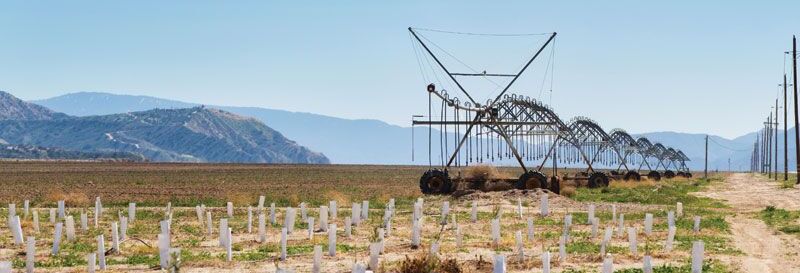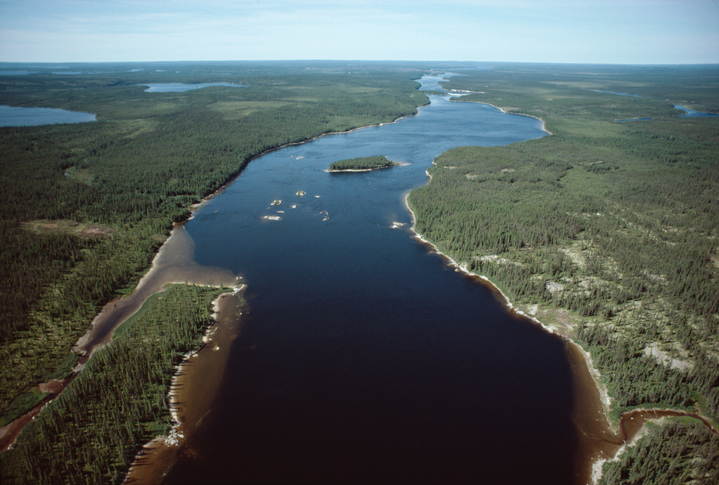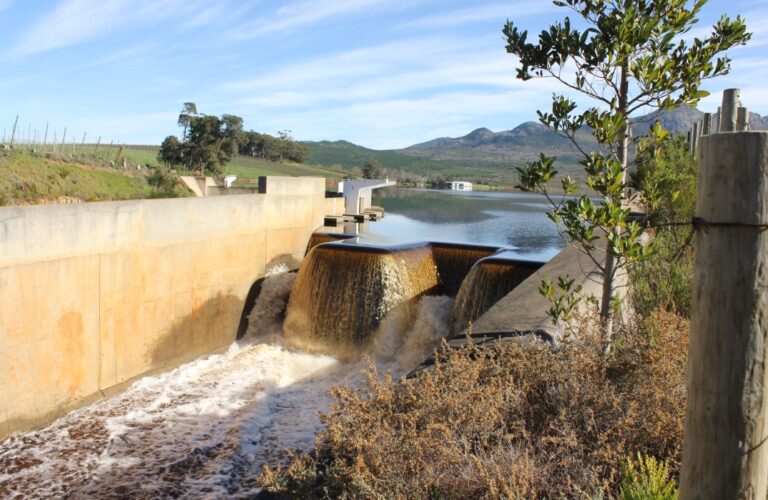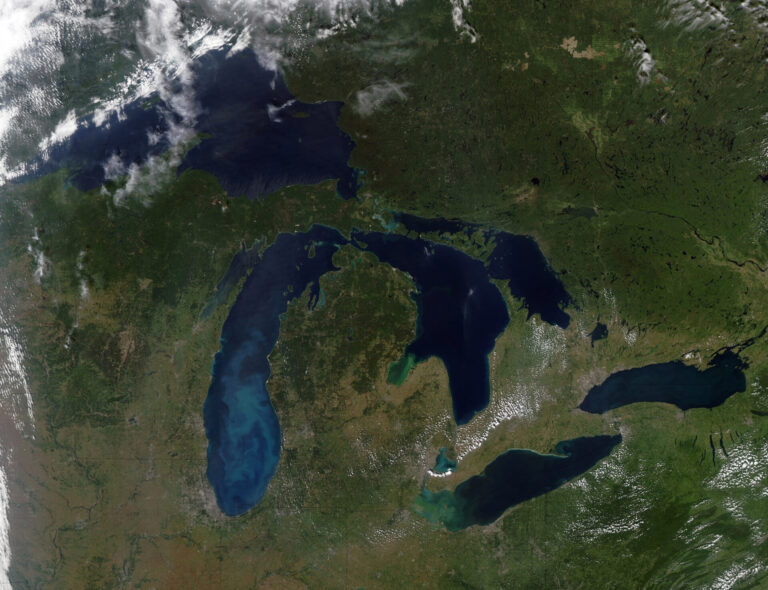It is obvious that the production of food requires a sufficient and reliable supply of quality water. Given the plentiful nature of this resource in some parts of the world like Canada, gaining access to fresh, potable water is less of an issue than in others.
However, the availability of water is ultimately controlled by factors like human development, climate variability, and climate change. These factors influence or control where, when, and how water exists in the hydrological cycle. The ramifications of water excess are obvious from the images of flood-ravaged areas around the world, and Canada is not immune to the devastating effects of such events with the recurring floods in the Red River Valley of Manitoba and the flooding of Calgary in 2013 and southern Saskatchewan in 2014.
On the flip side, prolonged deficits of water (such as droughts) are by far the more costly of climate-related events, specifically in terms of gross domestic product (GDP) dollars generated by the food industry. The unfortunate fact about droughts is that they are insidious events, and one is typically not aware that they are in one until it is too late, as successive years of moisture deficits deplete soil water storage to the point of collapsing food production capability.
Now, a shift in climatic patterns has been one of the factors blamed for the severe four-year drought currently affecting California, where record-breaking high temperatures and a smaller-than-average snowpack have turned previously full reservoirs into mud-cracked ponds. Although things could return to normal patterns in the coming years, it is equally possible a shift may have occurred to a similar type of mega-drought condition that struck the American southwest hundreds of years ago. Time will tell, but the impacts are beginning to manifest in many parts of the North American food system.
California has a vibrant agricultural industry that produces as much as 20 per cent of America’s food. Being the largest exporter of food in world (next to China, who surpassed the United States in 2014 due to the droughts in California, Texas, and Oklahoma), this places the United States in a very precarious position regarding their agricultural contribution to the national GDP. As noted in a recent GlobalNews article, there is a perception that the unfortunate situation in California may be an advantage to Canada, as it may provide more at-home opportunities for our food production system. Products like tomato paste, garlic, and berry production have been identified as potential new market opportunities in terms of being able to produce these products at home to service a market that California will be unable to. However, considering the amount of money that Canadians spend on exports from California (about $1.2 billion in 2013 according to Statistics Canada), and the likely rise in costs associated with those commodities due to supply and demand forces, any advantage will likely be local in scale and not transcend to the average Canadian.
Our food systems in North America and abroad are inextricably connected—and we are not immune to the effects. Given these connections, an adverse effect somewhere in the system can ultimately result in an adverse effect elsewhere. Therefore, it is not as simple as who will be the winners and who will be the losers, but what the ultimate effect will be. For example, a recent article produced by the Calgary Herald noted that cattle production in Canada is currently being threatened by moisture deficits, leading to a decrease in pasturing and an increase of feed prices.
“The situation is a contrast to the U.S., the world’s largest beef producer, where the wettest May on record has boosted pasture conditions in Texas and is prompting ranchers to expand their herds,” the article stated. “Drought conditions that shrunk herds to the smallest since 1952 are easing and the U.S. Department of Agriculture forecasts domestic beef output will halt its four-year slide in 2015 and increase next year.”
Climate influences in California and other U.S. states can directly affect Canada’s position on the world stage of food production, whether it is positive or negative. It is clear that a lot of this centres on the availability of water. As indicated previously, Canada is not immune to extended drought events. Even as we head into the 2015 growing season, significantly below normal precipitation is being noted in areas of our country, and the thought of a potential drought is on people’s minds (see Figure 1).
Therefore, in contrast to the question of “What advantages does the drought in California offer Canada?” the questions that really need to be asked are “What connectivity exists between our climate and our food production system in North America?” and “What are the ripple effects to other areas when droughts are experienced elsewhere on the continent, or even across the globe?” If we are unable to answer these questions, we then exist at a state of elevated risk regarding the security of our food production system and the overall benefits it provides.
The ultimate question then becomes “What can we do to address this threat, over which we have little to no control?” A good start to answering this question is to understand what water we have, when we have it, how it changes over time, its environmental, social, and economic value, how we use it, and more importantly, how best to use it. By conducting comprehensive water inventories (to identify where the water is) and dynamics analysis (to understand when the water is), we can deploy management strategies to circumvent the negative effects of drought. In fact, we have done this in the Palliser’s Triangle of the southern Prairie provinces with the introduction of irrigation districts and associated storage and conveyance infrastructure in the early 1900s.
Although not a panacea to address shortfalls in water availability, the storage of large volumes of water can alleviate the immediate challenges associated with drought. However, if sustained for a long enough period of time, these “water banks” can become depleted, much like what is currently happening in California.
The leveraging of groundwater supplies, given the vast amounts beneath our landscape, and the deployment of conjunctive use strategies (such as using groundwater and surface water in a balanced manner) also exist as potential opportunities to mitigate the adverse effects of drought. However, the sustainability of groundwater can be threatened if not properly managed. An example of this is playing itself out in the American Midwest, where water levels in the High Plains Aquifer have been in steady decline since the 1940s due to over-pumping for food production and energy extraction. In some areas, water levels have dropped as much as 90 metres or more leading to land subsidence and reduced storage capacity of the very aquifers that have sustained that region.
This too could be Canada’s future if we are not careful. With a world heading toward nine billion people by the middle of this century, and Canada’s role in the global food production system, taking a shortsighted view to this may lead to unintended consequences.
In the end, it will be the proper, and coordinated, monitoring and management of our water resources that will dictate its ability to sustain Canada’s food production system, and provide the benefits to society that are almost an expectation now rather than an outcome. Therefore, you should ask yourself the following:
• How literate are we regarding water?
• Do we understand where it comes from and how much we have, its importance to what we do, the vulnerabilities it faces with respect to climate variability and climate change, and its connectivity to our landscapes and economic system?
• Are we using it wisely, and how prepared are we for the next mega-drought?
It is likely that many Californians are asking themselves these very questions, but the answers are likely just as elusive as they are to us Canadians. If that is the case, then we are in bigger trouble then we think. WC










It is unfortunate that the USA and Canada have had access to so much surface and ground water that we have been profligate in our irrigation practices.
Looking around the world one finds that treated urban wastewater is used for irrigation purposes in Israel (notably) and Spain and Portugal, with Israel re-using about 80% of its national wastewater supply for this purpose. Additionally, they have all fostered more efficient irrigation practices and the type of illustrated mid-day spray irrigation systems are now rarely seen because of the extensive water loss to evaporation.
Parts of Australia have developed “drought proof farms” through the use of recycled and treated wastewater.
Caribbean Island resorts often use treated wastewater to give their guests the luxurient green lawns and flowers the guests expect.
Admittedly most wastewater utilities discharge treated wastewater into a near by surface water source (which replenishes the volume and flow for down stream use) but generally we are out of touch with modern efficient practices and technologies.
ISO TC 282 SC 1 is pursuing the work on re-use of treated wastewater for irrigation purposes, which includes urban boulevard landscaping. Any one wishing to be part of this process can contact me: [email protected].